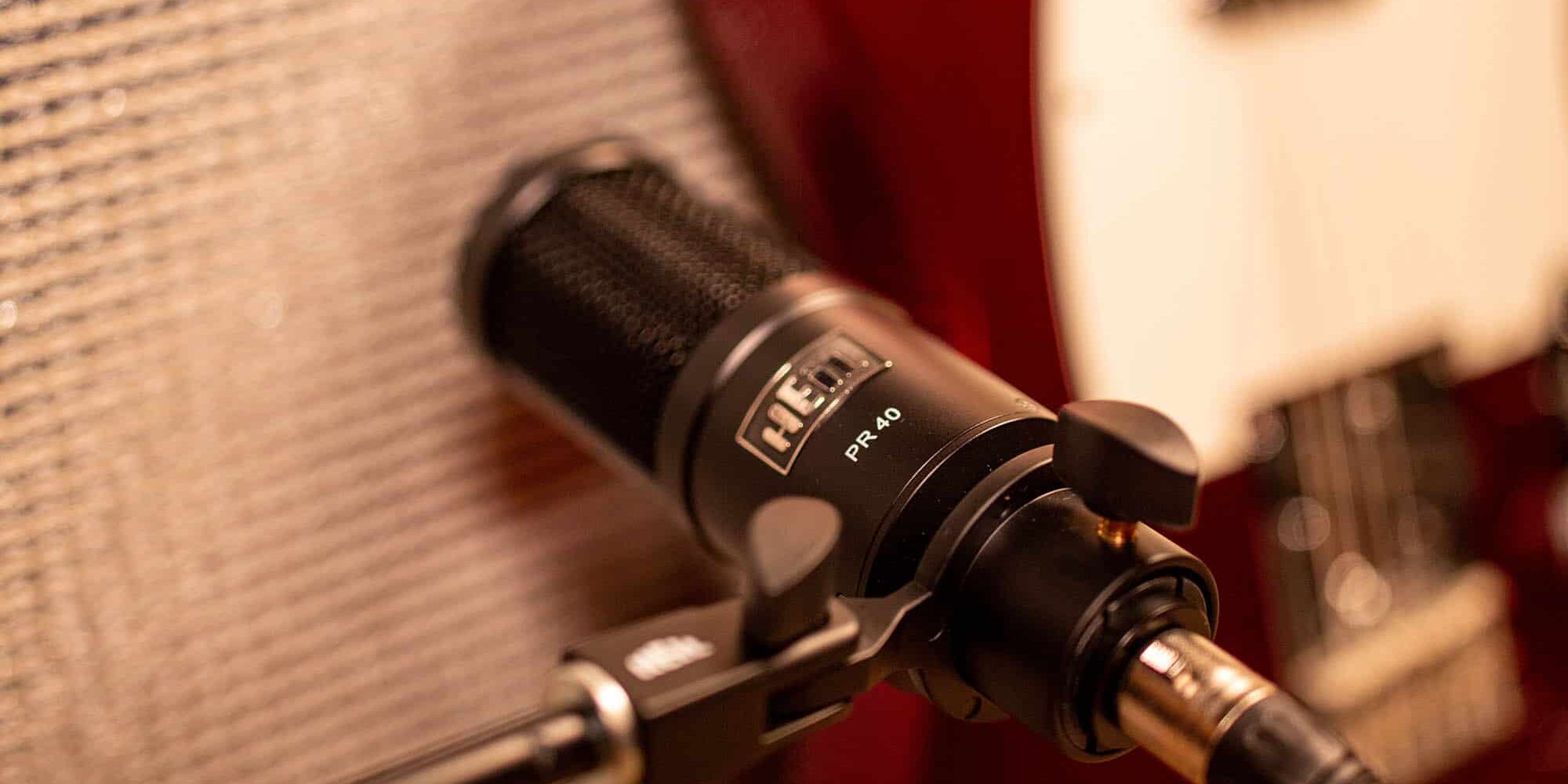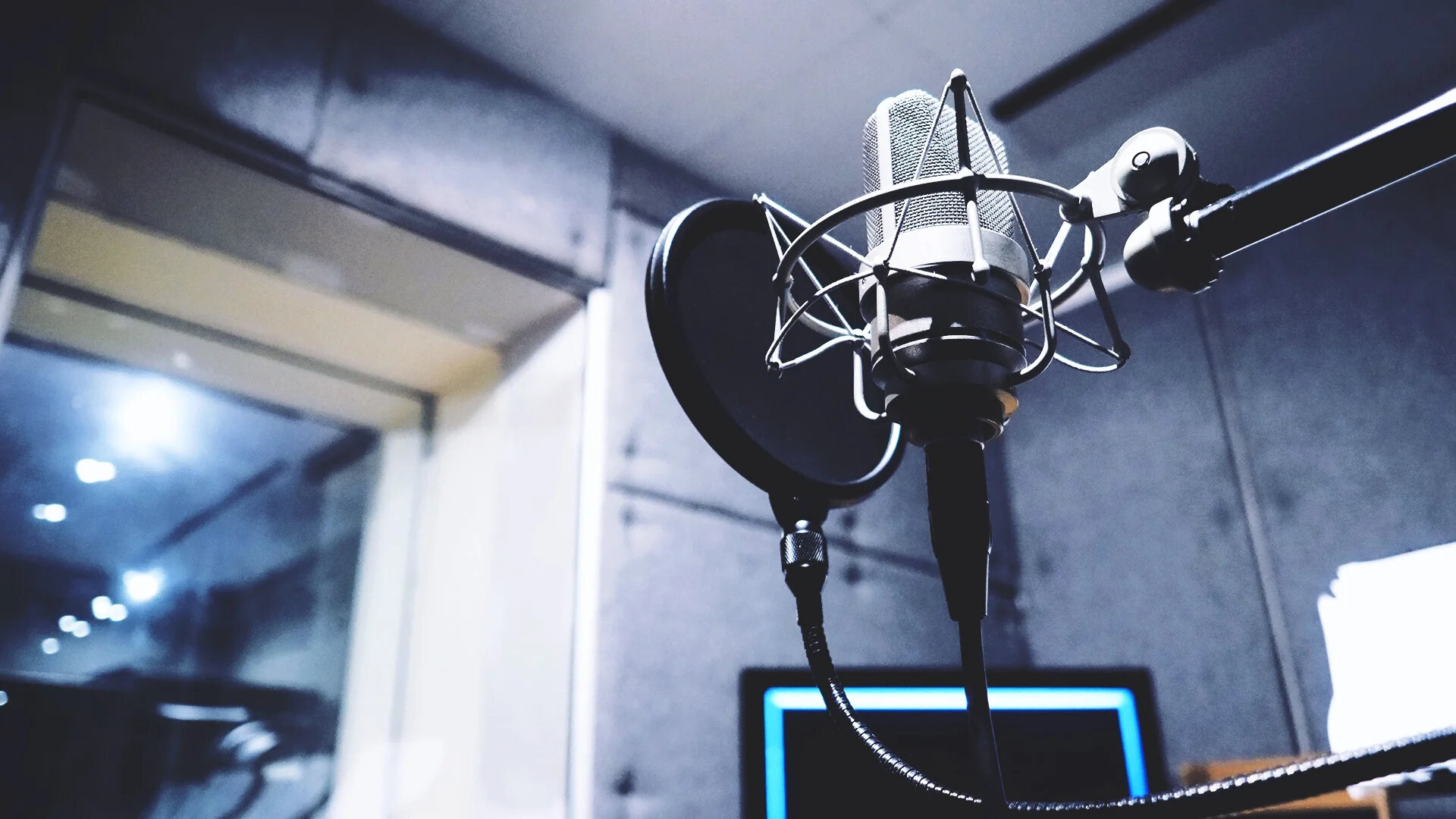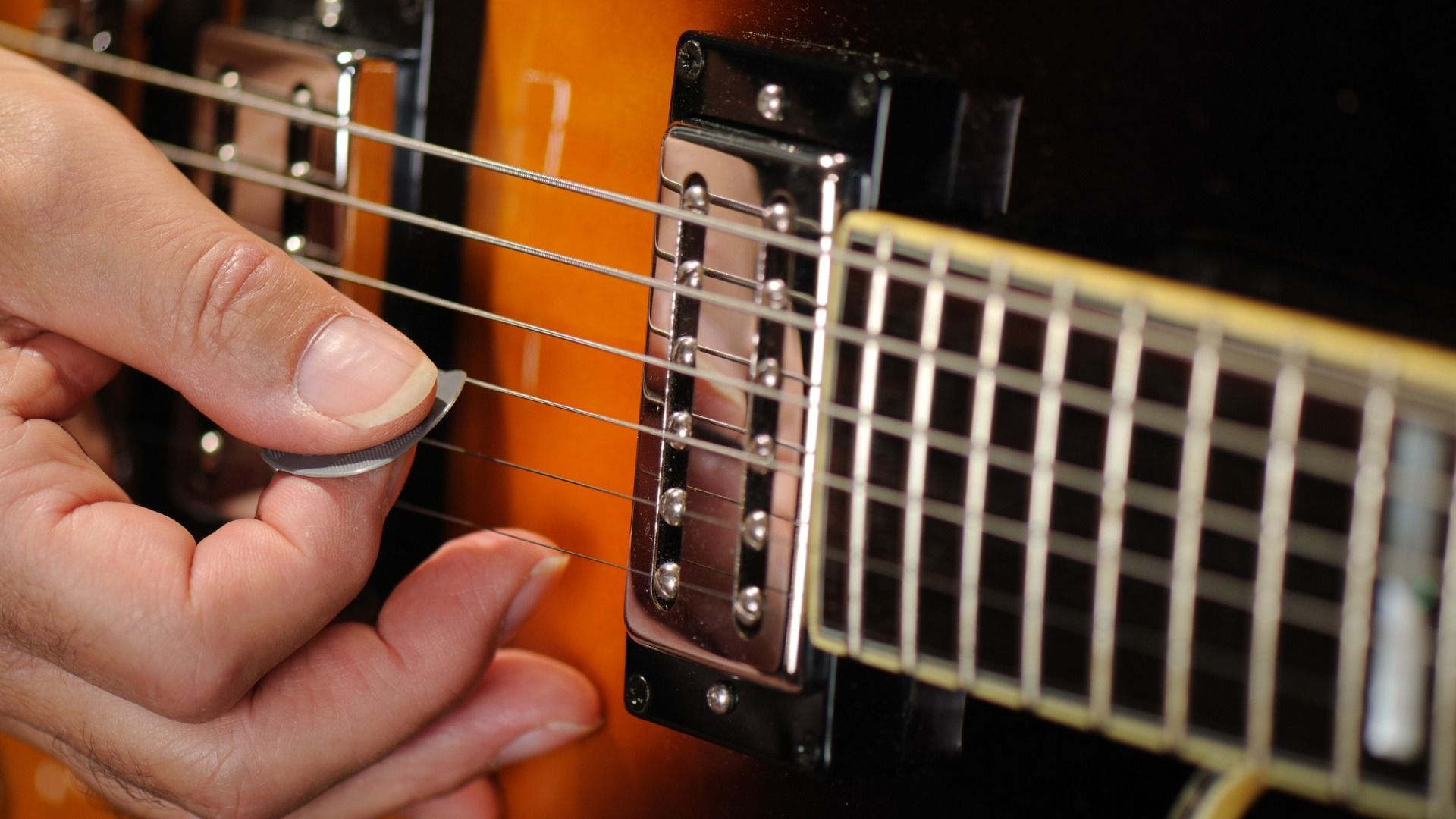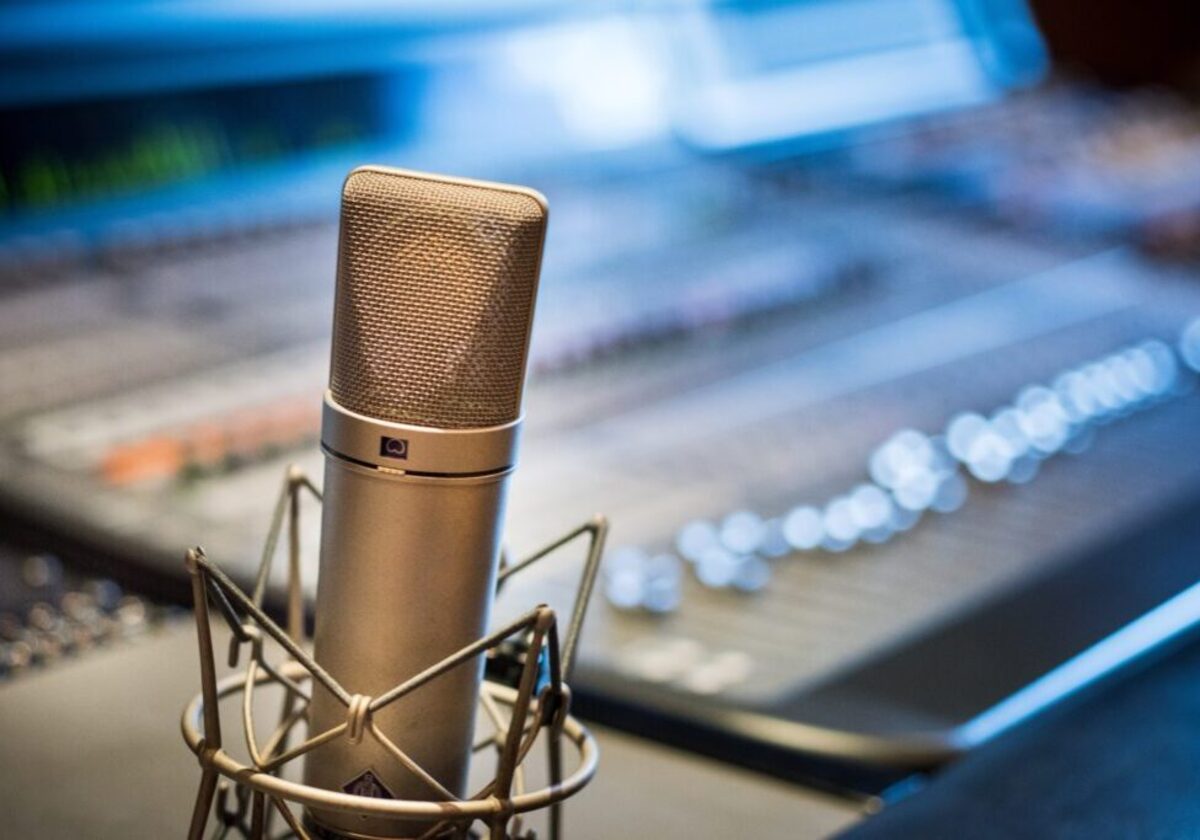Home>Devices & Equipment>Microphone>How To Stop Microphone From Picking Up Background Noise


Microphone
How To Stop Microphone From Picking Up Background Noise
Published: February 16, 2024
Learn how to prevent your microphone from picking up background noise with these effective tips and techniques. Improve your audio quality now!
(Many of the links in this article redirect to a specific reviewed product. Your purchase of these products through affiliate links helps to generate commission for AudioLover.com, at no extra cost. Learn more)
Table of Contents
Introduction
In the world of audio recording and communication, the microphone is an indispensable tool. Whether you're a content creator, a podcaster, or someone who frequently engages in video calls, the quality of your microphone can significantly impact the overall experience for both you and your audience. However, one common challenge that many individuals encounter is the issue of background noise being picked up by the microphone. This unwanted noise can detract from the clarity and professionalism of the audio, leading to frustration and a diminished end product.
The good news is that there are several effective strategies to minimize or eliminate background noise picked up by your microphone. By understanding the root causes of this issue and implementing practical solutions, you can significantly enhance the audio quality of your recordings and communications.
In this comprehensive guide, we will delve into the various methods and techniques for preventing a microphone from picking up background noise. From adjusting microphone settings to utilizing soundproofing materials and leveraging noise-canceling software, we will explore a range of strategies that cater to different environments and preferences. Whether you're a seasoned audio professional or a newcomer to the world of microphones, this guide will equip you with the knowledge and tools to tackle background noise effectively.
So, if you've ever found yourself frustrated by the interference of unwanted sounds during your recordings or calls, rest assured that there are practical solutions at your disposal. By implementing the insights and techniques outlined in this guide, you can take proactive steps to ensure that your microphone captures clear, crisp audio without the distraction of background noise. Let's dive in and explore the strategies that will empower you to reclaim control over your microphone's audio performance.
Understanding the Problem
Before delving into the solutions, it’s essential to grasp the underlying factors that contribute to a microphone picking up background noise. This understanding will pave the way for targeted and effective interventions to mitigate the issue.
First and foremost, microphones are designed to capture sound, and they do so with remarkable sensitivity. While this sensitivity is advantageous for capturing clear and detailed audio, it also means that microphones can inadvertently pick up ambient sounds, such as the hum of a computer fan, the rustle of papers, or the chatter of distant conversations. These background noises can detract from the primary audio source, leading to a muddled and distracting listening experience.
Additionally, the environment in which the microphone is used plays a crucial role in the prevalence of background noise. For instance, in a home recording studio, factors such as room acoustics, external traffic noise, and household activities can all contribute to unwanted sound being picked up by the microphone. Similarly, in a professional setting, such as a conference room or office space, the ambient noise from air conditioning systems, shuffling papers, and nearby conversations can pose challenges for clear audio capture.
Furthermore, certain microphone types, such as condenser microphones, are inherently more sensitive and prone to picking up background noise compared to dynamic microphones. Understanding the characteristics of your specific microphone can inform the strategies you employ to address the issue effectively.
It’s also important to consider the intended use of the microphone. For example, a podcasting microphone used in a controlled studio environment may require different noise mitigation techniques compared to a headset microphone used for remote work in a bustling household.
By recognizing these contributing factors and gaining insight into the dynamics of audio capture, you can tailor your approach to preventing background noise. In the subsequent sections, we will explore targeted methods for adjusting microphone settings, utilizing soundproofing materials, optimizing microphone positioning, and leveraging noise-canceling software to address this pervasive issue.
Adjusting Microphone Settings
One of the primary steps in addressing background noise picked up by a microphone is to optimize its settings for the specific recording or communication environment. By making strategic adjustments, you can enhance the signal-to-noise ratio and minimize the impact of ambient sounds on the audio output.
Firstly, consider adjusting the microphone’s gain or sensitivity settings. The gain controls how much sound the microphone captures, and reducing the gain can help mitigate the pickup of background noise. Many microphones, especially those used for professional audio recording, feature gain control knobs or settings within accompanying software. By lowering the gain to an appropriate level, you can prioritize the capture of the primary audio source while reducing the influence of ambient noise.
Furthermore, if your microphone is connected to a computer or audio interface, explore the equalization (EQ) settings to tailor the frequency response. By attenuating frequencies associated with background noise, such as low-frequency rumble or high-frequency hum, you can minimize their impact on the audio signal. Conversely, boosting frequencies associated with the primary audio source can enhance its clarity and presence in the recording.
Another crucial setting to consider is the polar pattern of the microphone. Different microphones feature distinct polar patterns, such as cardioid, omnidirectional, and bidirectional. Selecting the appropriate polar pattern for your specific recording environment can aid in rejecting unwanted sounds originating from particular directions. For instance, a cardioid microphone is adept at capturing sound from the front while attenuating sounds from the rear, making it suitable for isolating the desired audio source from background noise.
Additionally, if your microphone offers built-in noise reduction or suppression features, familiarize yourself with these capabilities. Many modern microphones incorporate digital signal processing algorithms that can identify and attenuate background noise in real time, contributing to a cleaner audio output.
By methodically adjusting these settings and leveraging the capabilities of your microphone, you can proactively address the challenge of background noise interference. In the subsequent sections, we will explore additional strategies, including the use of soundproofing materials and optimal microphone positioning, to further enhance the clarity and fidelity of your audio recordings and communications.
Using Soundproofing Materials
Soundproofing materials play a pivotal role in creating an acoustically favorable environment for microphone use, effectively reducing the intrusion of background noise. Whether you’re recording in a home studio, participating in video calls from a busy office, or engaging in remote work from a bustling household, soundproofing materials can significantly enhance the clarity and focus of your audio capture.
One effective approach involves the strategic placement of acoustic panels or foam tiles in the recording space. These panels are designed to absorb and diffuse sound waves, minimizing echoes and reverberations while attenuating external noise. Placing acoustic panels strategically on walls, ceilings, and other reflective surfaces can create a more controlled acoustic environment, reducing the impact of ambient sounds on microphone recordings.
Furthermore, if the recording space features hard surfaces that contribute to sound reflections and reverberations, consider incorporating sound-absorbing materials such as heavy curtains, carpets, and furniture to dampen these reflections. By softening the reflective surfaces in the environment, you can curtail the propagation of ambient noise and create a more acoustically neutral space for microphone use.
For individuals working in shared or noisy environments, portable sound isolation shields or vocal booths can offer an effective solution. These shields are designed to surround the microphone, creating a focused acoustic space and shielding it from surrounding noise sources. Whether in a home office or a collaborative workspace, these compact isolation shields can significantly improve the signal-to-noise ratio, allowing for clearer and more professional audio capture.
Additionally, if the microphone is positioned on a desk or table, utilizing shock mounts or isolation pads can mitigate the transmission of vibrations and mechanical noise to the microphone. These accessories effectively decouple the microphone from the surface it rests on, reducing the impact of low-frequency rumble and other vibrations that can compromise audio quality.
By integrating soundproofing materials and techniques into your recording or communication space, you can create an environment that minimizes the intrusion of background noise, allowing your microphone to capture pristine and focused audio. In the following sections, we will explore the significance of optimal microphone positioning and the potential of noise-canceling software in further enhancing the audio recording and communication experience.
Positioning the Microphone
The positioning of a microphone within a recording or communication space plays a critical role in determining the quality of audio capture and its susceptibility to background noise. By strategically placing the microphone and considering its proximity to sound sources and potential noise sources, you can optimize its performance and minimize unwanted interference.
First and foremost, consider the distance between the microphone and the primary sound source. Whether it’s your voice during a podcast recording, a musical instrument in a studio setting, or a speaker during a video call, maintaining an appropriate distance can help prioritize the direct sound while reducing the impact of ambient noise. Experiment with microphone placement to find the optimal balance between capturing clear, focused audio and minimizing background noise pickup.
Furthermore, pay attention to the orientation of the microphone relative to noise sources. For instance, if the microphone is positioned near a computer fan or air conditioning vent, orienting it to minimize direct exposure to these sources can help attenuate their influence on the audio signal. Similarly, if there are known noise sources in the environment, such as a busy street outside a home studio, positioning the microphone away from these sources can help mitigate their impact.
Consider the use of microphone accessories such as pop filters or windscreens to reduce the influence of plosive sounds and breath noise, which can contribute to background noise. These accessories are particularly valuable for vocal recordings and can help maintain a consistent and clear audio output by minimizing unwanted artifacts.
Moreover, if you’re using a desktop microphone, elevating it on a stand or boom arm can help isolate it from surface-borne vibrations and mechanical noise. By suspending the microphone, you can reduce the transmission of rumble and vibrations, contributing to a cleaner and more focused audio capture.
For individuals working in dynamic environments, such as home offices or shared workspaces, consider the use of directional microphones with a focused pickup pattern. These microphones are adept at capturing sound from specific directions while attenuating noise from other angles, providing a targeted approach to isolating the desired audio source.
By thoughtfully positioning the microphone and considering its interaction with the surrounding environment, you can proactively mitigate the impact of background noise and optimize the clarity and fidelity of your audio recordings and communications. In the subsequent section, we will explore the potential of noise-canceling software as a complementary strategy for addressing background noise interference.
Using Noise-Canceling Software
In addition to physical adjustments and environmental considerations, leveraging noise-canceling software can serve as a powerful tool in mitigating background noise picked up by a microphone. This software, often available as standalone applications or integrated features within recording and communication platforms, offers advanced digital signal processing capabilities to identify and suppress unwanted ambient sounds in real time.
One prevalent approach to noise cancellation involves the use of spectral analysis to identify the frequency components of background noise. By analyzing the spectral fingerprint of ambient sounds, noise-canceling software can selectively attenuate these frequencies, effectively reducing their impact on the audio signal captured by the microphone. This targeted suppression can significantly enhance the clarity and intelligibility of the primary audio source while diminishing the influence of background noise.
Furthermore, some noise-canceling software incorporates adaptive algorithms that continuously monitor the acoustic environment and dynamically adjust their processing parameters to counteract changing noise conditions. This adaptive capability enables the software to maintain effective noise suppression even in dynamic and unpredictable environments, ensuring consistent audio quality across varying recording and communication scenarios.
For individuals engaged in remote work or online meetings, noise-canceling software integrated into communication platforms can offer a seamless solution for minimizing background noise during voice and video calls. These software-based noise reduction features can enhance the clarity of spoken communication by suppressing ambient sounds such as keyboard typing, mouse clicks, and environmental noise, fostering a more focused and professional communication experience.
It’s important to note that while noise-canceling software can be highly effective in reducing background noise, it’s essential to configure these tools judiciously to avoid unintended artifacts or degradation of the primary audio signal. Balancing noise reduction with the preservation of natural audio characteristics is key to achieving optimal results without compromising audio fidelity.
By integrating noise-canceling software into your recording and communication workflows, you can harness the power of digital signal processing to proactively address background noise interference, resulting in clearer, more professional audio recordings and communications. In the subsequent section, we will recap the key strategies discussed and conclude with a comprehensive outlook on mitigating background noise picked up by microphones.
Conclusion
In the realm of audio recording and communication, the issue of background noise interfering with microphone capture is a pervasive challenge that can detract from the quality and professionalism of audio content. However, armed with a nuanced understanding of the contributing factors and a diverse toolkit of strategies, individuals can effectively mitigate this issue and reclaim control over the clarity and fidelity of their audio recordings and communications.
From the proactive adjustment of microphone settings to the strategic use of soundproofing materials, optimal microphone positioning, and the integration of noise-canceling software, a multifaceted approach emerges to address background noise interference. By leveraging these strategies in a synergistic manner, individuals can create an environment that prioritizes the clarity of the primary audio source while minimizing the intrusion of unwanted ambient sounds.
Furthermore, the adaptability of these strategies to diverse recording and communication scenarios underscores their relevance in both professional and personal contexts. Whether in a home studio, a collaborative workspace, or a remote work setting, the application of these techniques empowers individuals to elevate the quality of their audio content and communication experiences.
It’s important to recognize that the pursuit of pristine audio capture is a dynamic and iterative process, often requiring a blend of technical acumen, creativity, and adaptability. As technology evolves and new innovations emerge, the landscape of noise mitigation and audio enhancement continues to expand, offering individuals an ever-growing arsenal of tools to address background noise interference effectively.
Ultimately, the quest to stop a microphone from picking up background noise is a testament to the enduring pursuit of audio excellence. By embracing the insights and strategies outlined in this guide and remaining open to continued learning and exploration, individuals can navigate the intricacies of audio capture with confidence and finesse, delivering compelling and immersive audio experiences that resonate with their audiences.
With a comprehensive understanding of the problem and a diverse array of solutions at their disposal, individuals can embark on their audio endeavors with the assurance that background noise interference will no longer overshadow the brilliance of their primary audio content.











